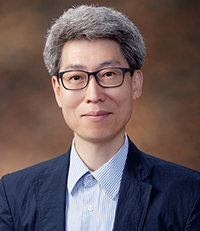
- Laboratory
- Chemical Process Laboratory for Advanced Materials ()
- Location
- 5-402
- Phone
- +82-62-530-1894
- kdhh@chonnam.ac.kr
- FAX
- +82-62-530-1889
세부내용
Laboratory Introduction
The world of nanotechnology has made huge contributions to the modern world and resulted in greater progress towards miniaturization. The distinctive properties attained by nanoscale materials have attracted immense research attention and resulted in more emphasis being placed on the tunability of material properties allowing for remarkable diversification. The synthesis of these materials by wet-chemical approaches has played a predominant role in the discovery of new compounds by alterations to the liquid processes. Although liquid processes are simpler, they suffer from shortcomings such as low rates of diffusion; poor mixing of reaction mixtures can result in poor homogeneity in the final product. Solid product isolation is another necessary step in conventional wet-synthesis processes, which adds to the cost and complexity while increasing the chance of incorporating impurities into the final product, limiting the potential of these methods. Obtaining a confined structure a few nanometers in scale is quite challenging using the wet-chemical synthesis route. To uncover the full potential of nano-based materials, a scalable synthesis methodology needs to be harnessed where control over the physical and chemical properties takes place at the nanoscale level. These shortcomings can be well-addressed by a gas-solid surface reaction technique, that is, atomic layer deposition (ALD). This technique is already a common choice in microelectronics for the fabrication of next-generation metal-insulator-metal capacitors and gate oxides in transistors. High-precision thickness control of the coating can be obtained by ALD on various aspect ratio structures including nanoparticles, nanotubes, nanowires, soft materials, and also biological materials. ALD is attractive for a large range of applications involving microelectronics, energy conversion and storage, sensing, and catalysis.
Research Areas
- Thin film and Powder technology for IC applications
- Energy storage and conversion
- Environmental photocatalyst
- DInterface Engineering
- Electrochemistry
- Sensors
Research Activities
- Our main research is focused on thin film/powder technology for various applications. The scope of the ongoing research includes:
Synthesis and Characterization of Nanomaterials for Battery, Capacitor, Photocatalyst, Electrochromic devices, Water splitting, Electrochemical Sensor, Medical Application of Low Temperature Plasma.